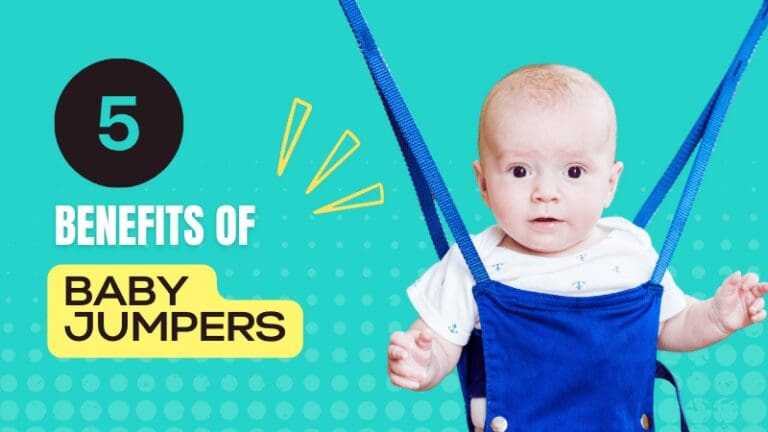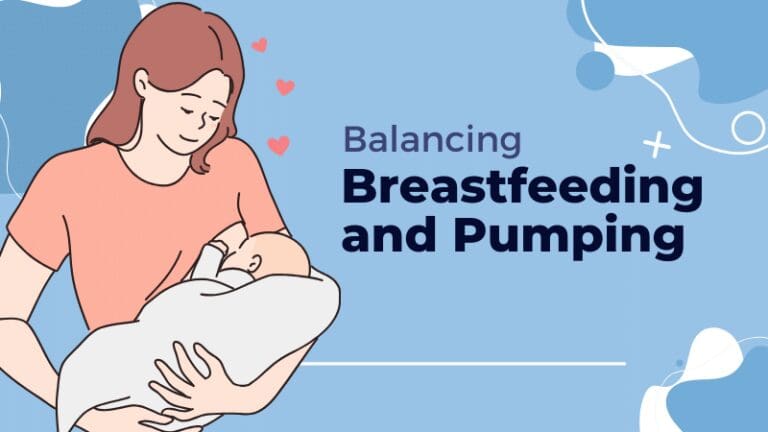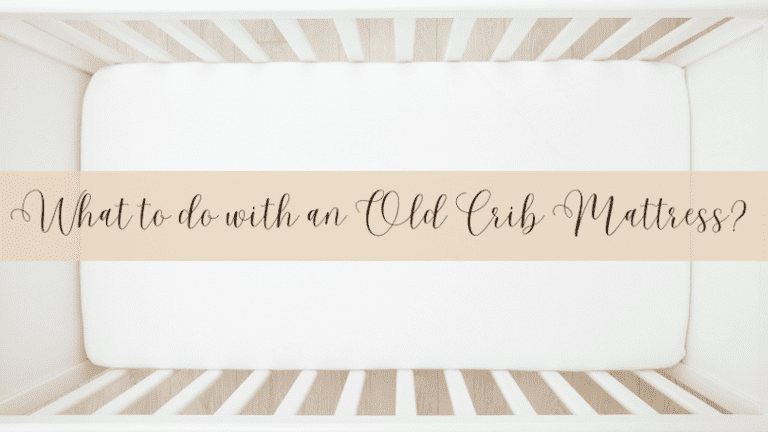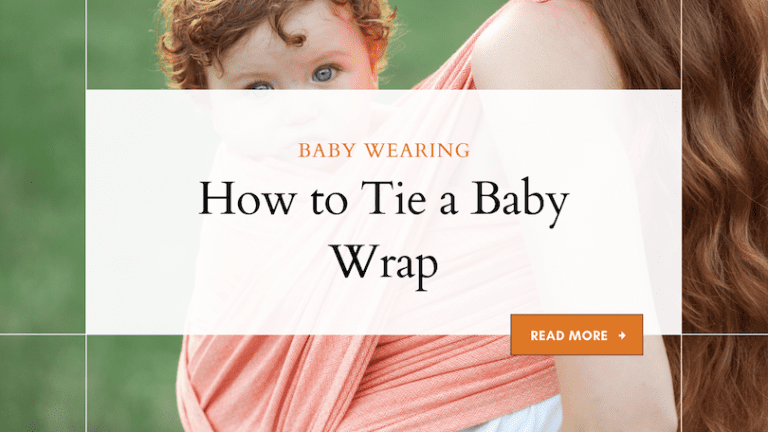3 Types of Baby Jumpers for Better Playtime
When it comes to exploring new play tools for my child, I get so excited (maybe just as much as my baby!) and I wonder if many other parents feel the same way too.
One of the best play tools I’ve bought my youngest, Theo, is his baby jumper. He just loves it. Baby jumpers are super fun to use and keep your child entertained very easily.
Now, when I was figuring out which one to buy, I realized there are 3 different types of baby jumpers. I took my time to explore the options and checked out all their safety elements too. Be it harnesses, locks, safety straps, and more features, I went through them all before buying the first one for my child.
So, let me ease your hunt for a baby jumper! We’ll take a look at the types of baby jumpers, see the features that parents like in each of them, and I’ll also offer some tips on choosing the right baby jumper.
Table of Contents

Types of Baby Jumpers
Alright. So, there are three types of baby jumpers. And it’s best to choose one that suits your baby’s needs.
- Doorway Baby Jumpers
- Stationary Baby Jumpers
- Activity Center Baby Jumpers
We’ll look at them all in detail. But before that, also check out my previous article on when can babies actually use jumpers?
1. What are Doorway Baby Jumpers?
A doorway jumper has a seat attached to a doorway using bands.

Pros
- It’s easy to assemble and does not occupy a lot of space.
- Doorway jumpers are cost-effective and are readily available in the market.
- Getting a baby in and out of this jumper is also pretty simple.
- Likewise, this jumper is low maintenance and comes with an easy-to-wash seat pad.
- It can be moved to other parts of your house that has a doorway.
Precautions
I know that as parents, you may have wondered if baby jumpers are safe to use. And yes, they are, provided you use them the right way and take precautions.
Recommended Article: Are Baby Jumpers Safe?
Post researching jumpers, I found that even a doorway jumper requires some precautions before introducing them to your little one.
- Do not buy this if you don’t have a spacious doorway. Your child can have trouble bouncing in a small doorway and may hit themselves on the sides of the doorway.
- Make sure you choose a decent design that fits well into your doorway (get your measurement tools out!)
- This jumper does not have a solid base that your baby can sit on. So, before getting one, check the surface area of the seat and if it can hold your child securely.
- If you already have one, try it with your child to see if they fit well within the seat. Also, your child must be able to rotate 360 degrees in this jumper.
2. What are Stationary Baby Jumpers?
A freestanding or stationary jumper was one of my first choices for Theo. It has its own frame, and they sit lower on the ground when compared to doorway jumpers.

Pros
- They don’t need a doorway and do not require any assembly either.
- It is effortless to move them around the house.
- A stationary jumper is affordable and simple to use.
- They have a seat set within the structure.
Precautions
- Keep your surroundings clear of objects that could potentially hurt your child.
- Adjust the seat according to your baby’s height. Their foot must rest well on the floor.
- Your child must fit well within the seat to move their hands and legs freely.
Personally, if you ask me, I find them extremely helpful for a child keen to explore their surroundings and bounce happily. A parent I knew shared her words of wisdom with me when she came to know that I was looking for a jumper:
“I got my 5-month-old a stationary jumper. We use it for 10–15 minutes per day. We don’t put her into the jumper any more than twice a day. Just 15 minutes are enough for her. That’s how I get the chance to sneak into the shower.”
3. What are Activity Center Baby Jumpers?
Okay, not gonna lie, this one’s my personal favorite. An activity center jumper has plenty of features (but they are pricier than the rest). When I introduced this jumper to Theo, he was just lost in his baby jumper world for a while.

Pros
- This one is more like a stationary jumper but with various features and attachments.
- It has toys, interactive buttons, rattles, speakers, and colorful lights.
- It keeps your baby engaged and lets them explore their surroundings better.
Precautions
- An activity center jumper is highly engaging, so please check if your child is bouncing AND exploring the features. Don’t let them get too distracted by the features.
- At times, you might feel that activity center jumpers don’t let your children jump a lot, but do not force it. Try getting them comfortable with the jumper and the features first. They will gradually get to bouncing!
- Once your little one starts loving the jumper, they may not want to get out of it. However, please don’t let them get carried away with their joy and exceed the time limit. This goes for all jumpers by the way.
A friend of mine who is a mother to twins also bought an activity center jumper. She told me:
“My kids love their baby activity center jumpers. Finally, I can get a coffee for myself after putting them in the jumper. But, I ensure that my babies are safe, check the straps are tight, and their feet are touching the floor… We got them their jumper when they were 6 months old. They are not even one and have started balancing themselves better!”

How to Choose the Right Baby Jumper?
We know there are different types of jumpers available in the market, but what matters is your choice. And making that choice can be hard sometimes.
When I was planning to buy a baby jumper, my husband Terry wanted to check on the essentials and there were several considerations we made together before choosing the one.
So, here are some things you should consider before buying a baby jumper:
- Durability and Comfort: Terry and I were particular about making sure the jumper was sturdy and comfy for our child. The seat material should be soft and comfortable for the baby. The jumper should also be strong enough to hold the baby’s weight. So, please pay close attention to these details before you get a baby jumper.
- 360-Degree Rotation: A good baby jumper provides 360-degree rotation for your child. You don’t want them to hurt themselves when something they are looking for is out of their reach, and they strain their neck or body to try getting at it. With full rotation, your child can touch and play with all their toys and interact with their surroundings.
- Easy Maintenance: An ideal jumper should be easy to maintain with washable seats, and easy-to-clean fabric, and have a hassle-free assembly process.
- Weight Limits and Safety: I was hyper-focused on making sure that the harnesses, belts, straps, and other fittings were strong enough to let my child move freely and enjoy bouncing. It is also important to ensure that all the fixtures are strong and fit well with your child’s weight.
Please ensure you read the instruction manual as well before you let your child use baby jumpers. Don’t leave them unattended and maintain time limits when using baby jumpers!
Final Takeaway on Baby Jumpers Types
You’ve got quite a few options for baby jumpers. Baby jumpers even come in varied shapes and sizes too! But the final decision is yours. Every baby jumper is significant in its own way. All you need is to choose what fits well for your baby and your current living situation.
I’ve explained the features of every type of baby jumper and the precautions you should take while using each of them. And remember, please keep in mind durability, weight limits, safety, and maintenance, while you choose a baby jumper.
Until next time, happy bouncing!





![How to Measure Baby Shoe Size? [With Printable Shoe Size Chart]](https://www.imperfecthomemaking.com/wp-content/uploads/2025/09/How-to-Measure-Baby-Shoe-Size-With-Printable-Shoe-Size-Chart-768x432.png)
